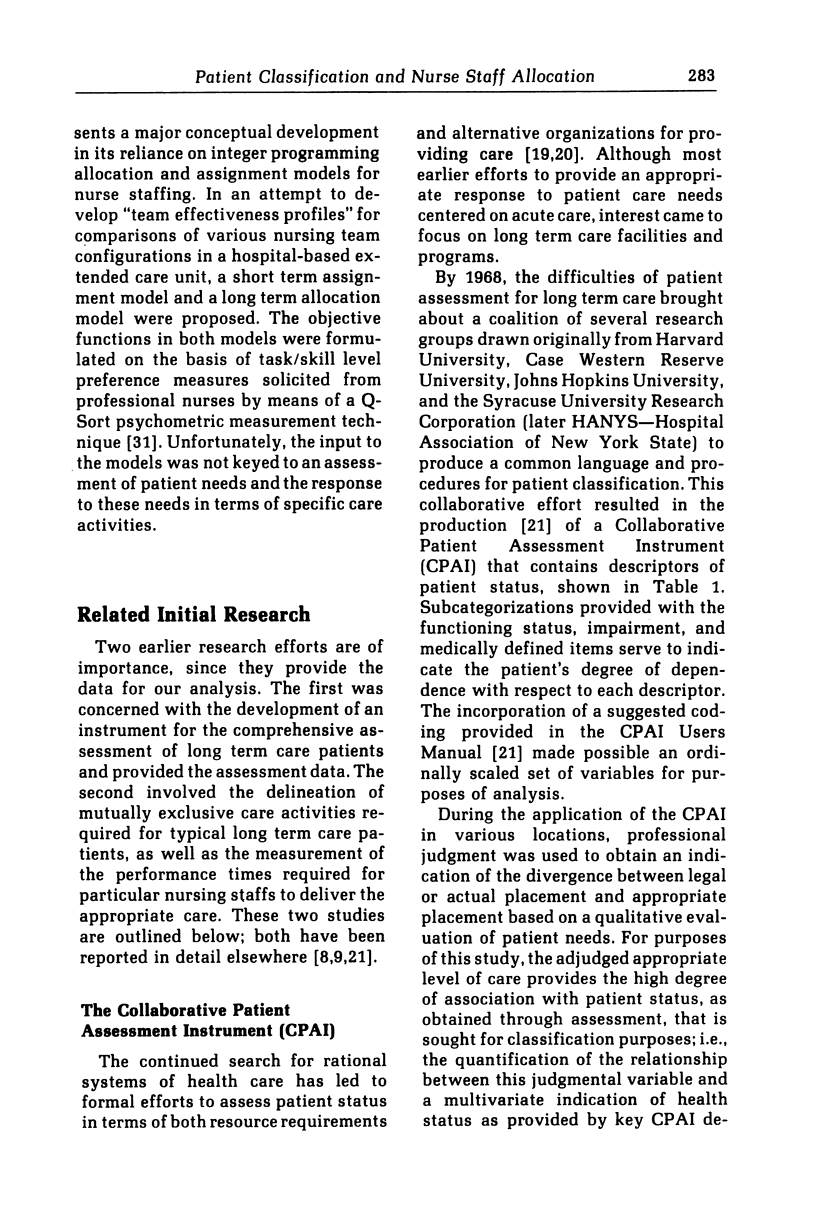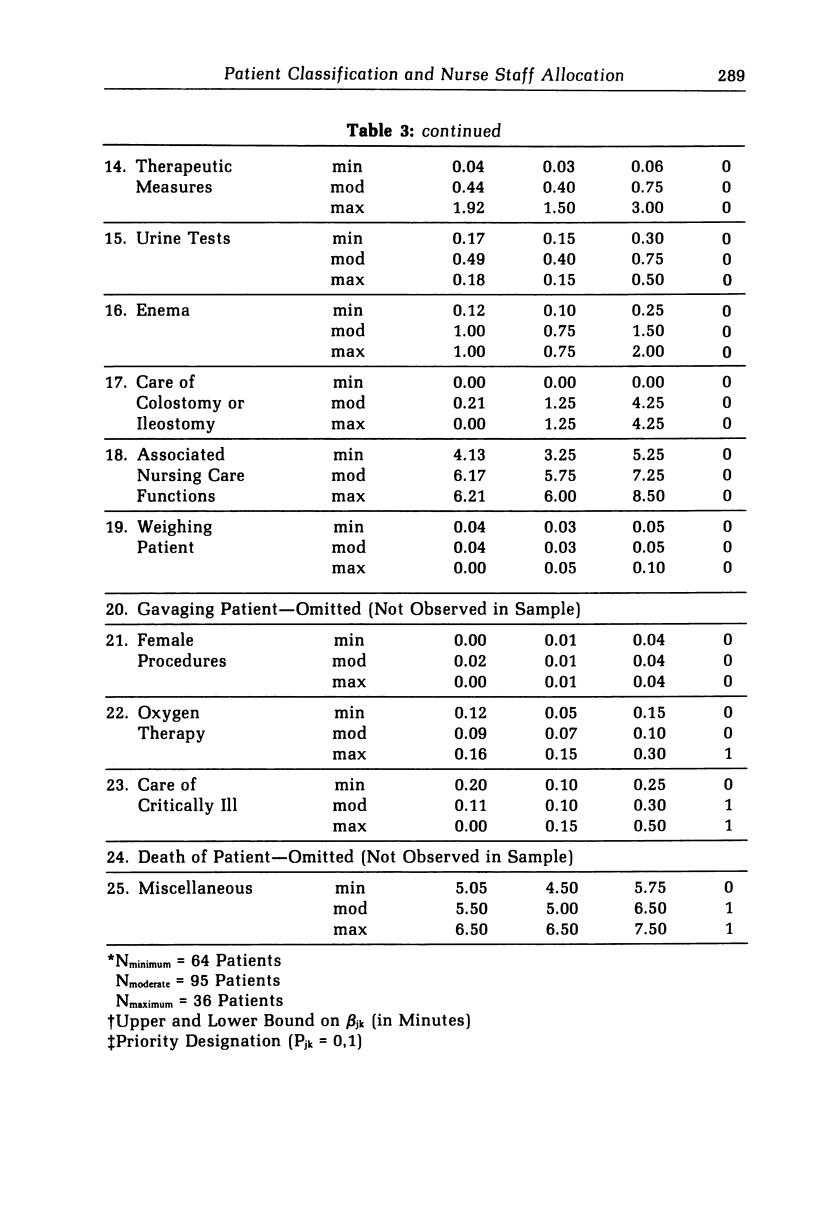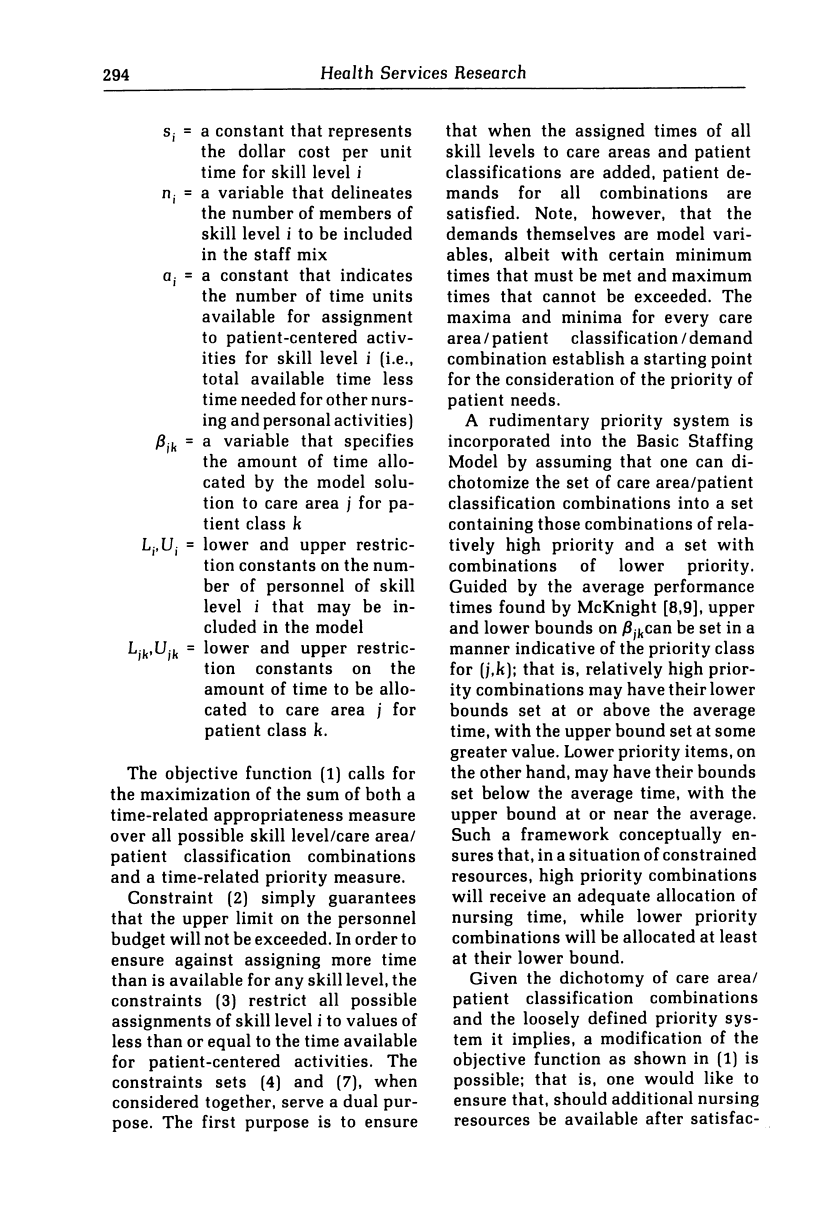Abstract
An integrated approach to patient classification and nurse staffing for long term care facilities is constructed, based on the quantification of patient care needs as reflected by formal assessment of a variety of key functioning status items, behavioral status indicators, and medically defined conditions. Nonlinear multiple regression techniques are employed in order to cluster these key assessment indicators in to an easily applied level of care classification method that can be used to determine placement of patients within the long term care system and to indicate the particular nursing care activities called for. Given the classification of patients into the various levels of care required (e.g., Chronic, Skilled Nursing Care, Intermediate A or B) a mixed integer/linear programming model is used to permit presentation of alternative nurse staffing strategies within a long term care facility or program. Extensions to the model portray the effects of changing budgetary, service, and legal restrictions.
Full text
PDF

























Selected References
These references are in PubMed. This may not be the complete list of references from this article.
- Burack B. Interdisciplinary classification for the aged. J Chronic Dis. 1965 Oct;18(10):1059–1064. doi: 10.1016/0021-9681(65)90095-0. [DOI] [PubMed] [Google Scholar]
- CONNOR R. J. A work sampling study of variations in nursing work load. Hospitals. 1961 May 1;35:40–41. [PubMed] [Google Scholar]
- KATZ S., FORD A. B., MOSKOWITZ R. W., JACKSON B. A., JAFFE M. W. STUDIES OF ILLNESS IN THE AGED. THE INDEX OF ADL: A STANDARDIZED MEASURE OF BIOLOGICAL AND PSYCHOSOCIAL FUNCTION. JAMA. 1963 Sep 21;185:914–919. doi: 10.1001/jama.1963.03060120024016. [DOI] [PubMed] [Google Scholar]
- Liebman J. S., Young J. P., Bellmore M. Allocation of nursing personnel in an extended care facility. Health Serv Res. 1972 Fall;7(3):209–220. [PMC free article] [PubMed] [Google Scholar]
- Parker R. A Bayesian approach to rating health status of geriatric patients. Med Care. 1971 Jul-Aug;9(4):331–344. doi: 10.1097/00005650-197107000-00004. [DOI] [PubMed] [Google Scholar]
- Parker R., Boyd J. A comparison of a discriminant versus a clustering analysis of a patient classification for chronic disease care. Med Care. 1974 Nov;12(11):944–957. doi: 10.1097/00005650-197411000-00006. [DOI] [PubMed] [Google Scholar]
- Revans R. W. Research into hospital management and organization. Milbank Mem Fund Q. 1966 Jul;44(3 Suppl):207–248. [PubMed] [Google Scholar]
- WHITING J. F. Q-sort: a technique for evaluating perceptions of interpersonal relationships. Nurs Res. 1955 Oct;4(2):70–73. doi: 10.1097/00006199-195510000-00003. [DOI] [PubMed] [Google Scholar]
- WOLFE H., YOUNG J. P. STAFFING THE NURSING UNIT. I. CONTROLLED VARIABLE STAFFING. Nurs Res. 1965;14:236–CONTD. [PubMed] [Google Scholar]
- Walker S. H., Duncan D. B. Estimation of the probability of an event as a function of several independent variables. Biometrika. 1967 Jun;54(1):167–179. [PubMed] [Google Scholar]
- Wolfe H., Young J. P. Staffing the nursing unit. II. The multiple assignment technique. Nurs Res. 1965 Fall;14(4):299–303. [PubMed] [Google Scholar]


